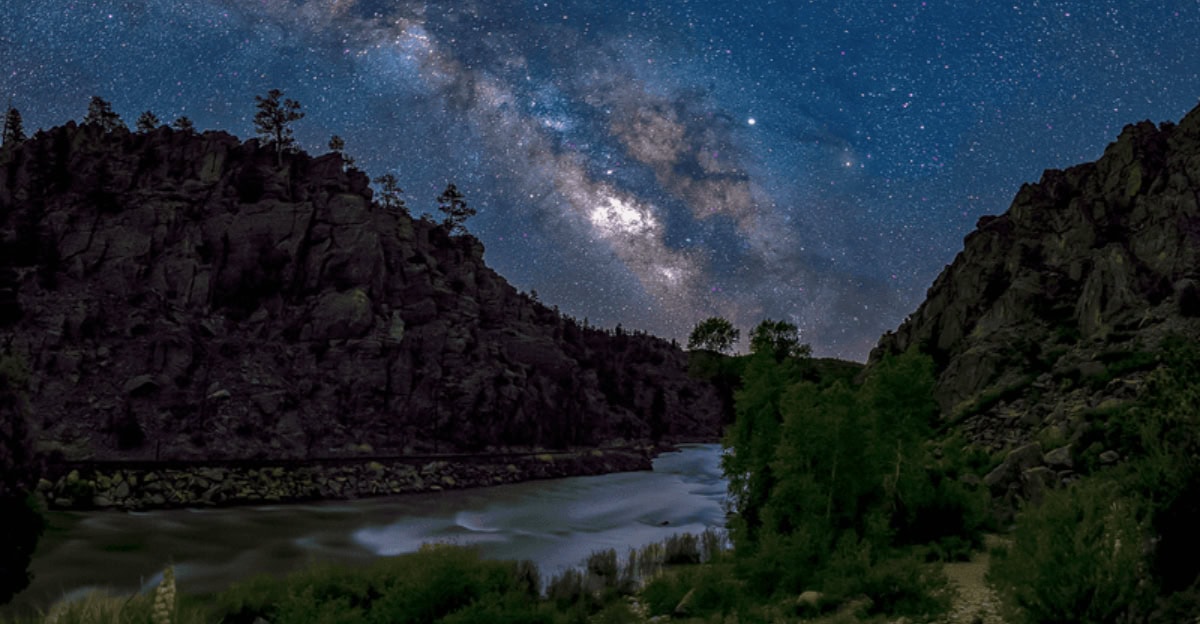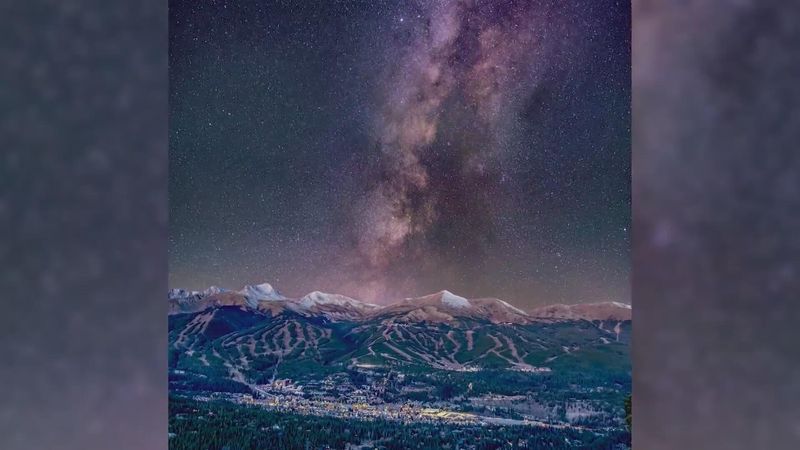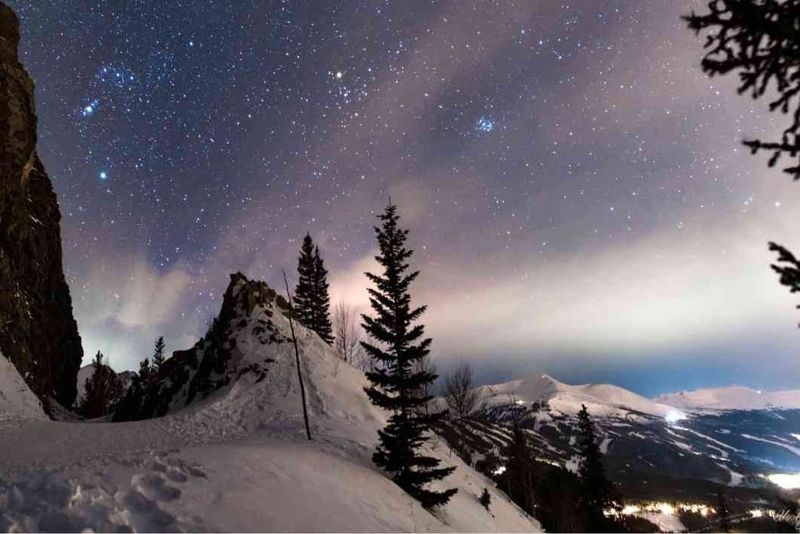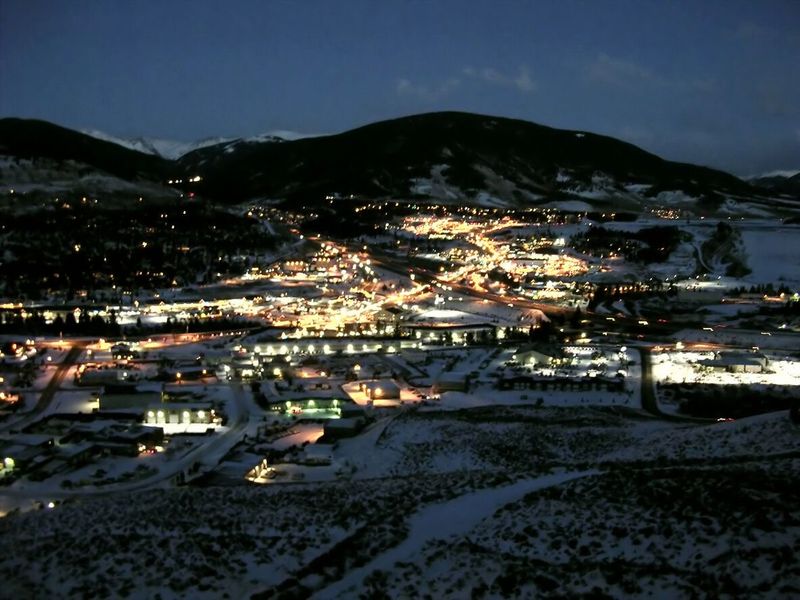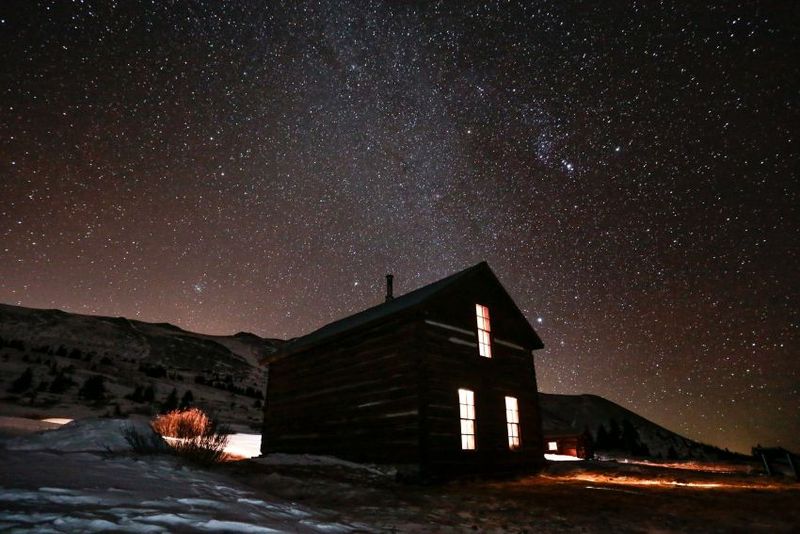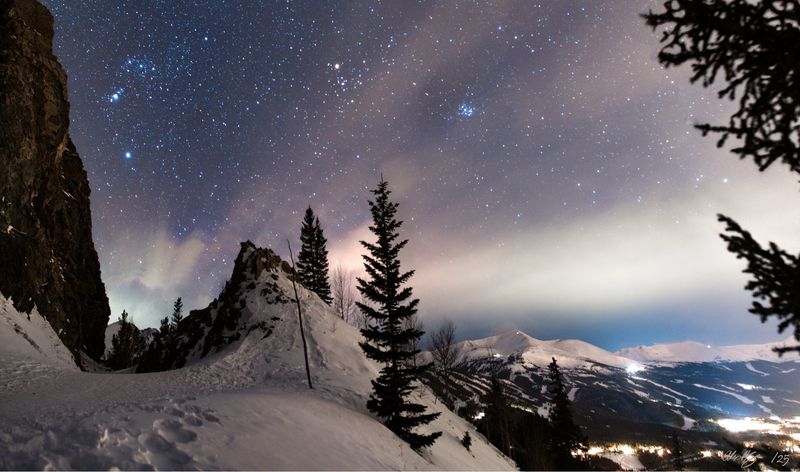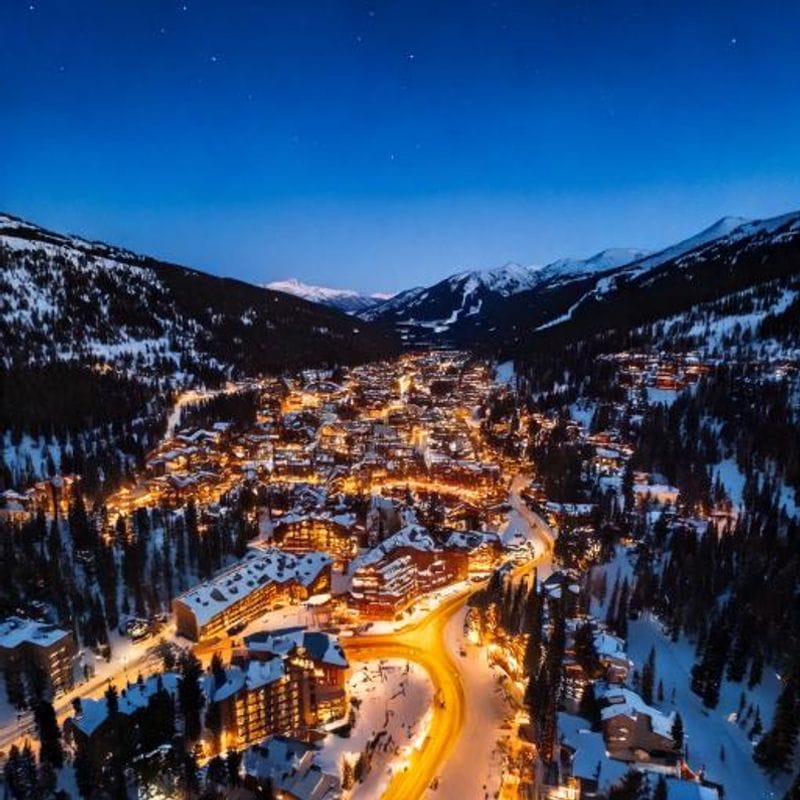Breckenridge, Colorado, just made history by becoming the first mountain ski resort community in the state to earn Dark Sky Community certification. This prestigious designation means the town has committed to protecting its night skies from light pollution through strict lighting standards and community education. For visitors and residents alike, this achievement opens up incredible opportunities to experience the magic of stargazing in one of Colorado’s most beloved mountain destinations.
1. The headline news
August 22, 2025, marked a groundbreaking moment for Breckenridge as it officially received Dark Sky International certification. This achievement makes the popular ski town the first mountain resort community in Colorado to earn this prestigious recognition.
The certification process required years of dedication and community commitment to reducing light pollution. Breckenridge now joins an exclusive group of places worldwide that prioritize protecting their natural night skies.
This milestone puts Breckenridge on the map as a premier stargazing destination alongside its reputation for world-class skiing and mountain recreation.
2. What that designation means
Dark Sky Communities must meet rigorous standards set by DarkSky International’s Places program, which has been protecting night skies since 2001. Communities voluntarily apply but undergo thorough vetting to ensure they meet strict requirements.
The designation requires towns to adopt strong outdoor lighting standards that minimize light pollution. Communities must also run educational programs to teach residents and visitors about the importance of dark skies.
Most importantly, certified communities commit to long-term protection of their night skies, ensuring future generations can enjoy star-filled evenings and natural darkness.
3. This has been years in the making
Breckenridge’s journey toward Dark Sky certification began way back in 2007 when the town first passed an exterior lighting ordinance. The community showed remarkable persistence in refining their approach over nearly two decades.
Major updates came in 2020 when officials tightened existing regulations. Additional changes in 2024 brought the town’s standards in line with DarkSky International’s specific guidance requirements.
The final certification process completed in 2025, representing 18 years of gradual improvements and community dedication to preserving the natural beauty of Colorado’s night skies.
4. Key rules you’ll actually notice
Walking through Breckenridge after dark, you’ll immediately notice the warmer, less glaring lighting throughout town. All fixtures must be fully shielded and point downward, eliminating harsh upward light that creates sky glow.
The town requires warm color temperature bulbs of 3000K or lower, which produce a cozy amber glow instead of harsh blue-white light. Strict lumen caps limit how bright common bulbs can be.
Compliance became mandatory July 1, 2025, with a grace period until January 2, 2026. After that date, property owners face fines for non-compliant lighting installations.
5. Where to stargaze in town right now
DarkSky International specifically recommends three prime stargazing locations within Breckenridge’s town limits. The Sawmill Museum offers excellent viewing with minimal light interference and easy parking access for visitors.
Gold Run Nordic Center provides another fantastic spot with wide open skies perfect for constellation viewing. The location combines accessibility with genuinely dark conditions for optimal star visibility.
Discovery Hill’s summit rounds out the top recommendations, offering elevated views that rise above most town lighting. All three locations provide convenient in-town access without requiring lengthy drives to remote areas.
6. It’s easy to get around after dark
Breckenridge’s commitment to walkability and sustainable transportation perfectly complements its Dark Sky status. The town’s compact layout makes it simple to reach prime stargazing spots on foot or by bicycle.
Free public transit eliminates the need for additional car headlights that can disrupt night vision and add unwanted light pollution. DarkSky International specifically praised this transportation infrastructure in their certification review.
The combination of pedestrian-friendly streets and reliable public transit means visitors can enjoy evening stargazing activities without contributing to light pollution or dealing with parking challenges at remote locations.
7. Time your visit to the moon
Planning your stargazing adventure around lunar phases dramatically improves what you’ll see in Breckenridge’s dark skies. New moon nights offer the absolute best conditions, with zero moonlight to wash out faint stars and celestial objects.
Even when there’s a moon, timing your viewing for when it’s below the horizon maximizes visibility of the Milky Way and distant galaxies. The National Park Service provides detailed guidance on optimal viewing times.
During full moon periods, you can still enjoy bright planets, major constellations, and the moon itself through binoculars or telescopes, just with fewer visible stars overall.
8. Programs and tours are a thing
Breckenridge regularly hosts town-sponsored dark sky events, with recent successful programs held at Gold Run Nordic Center. These community gatherings combine education with hands-on stargazing experiences perfect for beginners and families.
The Lodge at Breckenridge offers private astronomy tours through specialized companies, providing professional-grade telescopes and expert guides. These tours work especially well for first-time stargazers who want structured learning experiences.
Always check current schedules and weather conditions before planning your visit, as mountain weather can change quickly and affect visibility for both community events and private tours.
9. How Breckenridge Fits Into Colorado’s Dark-Sky Map
Colorado already boasts several incredible dark-sky locations, but Breckenridge adds something unique to the state’s collection. Unlike remote wilderness areas, this town offers stargazing with all the comforts of restaurants, hotels, and shops nearby.
The town sits at 9,600 feet above sea level, which means less atmosphere between you and the stars. Other Colorado dark-sky spots include Great Sand Dunes National Park and Dinosaur National Monument, but they require camping or long drives.
Breckenridge bridges the gap perfectly between convenience and cosmic wonder, making it easier for families to enjoy world-class stargazing without roughing it in the wilderness.
10. Etiquette for Better Nights
Good stargazing manners help everyone enjoy the incredible night sky that Breckenridge works so hard to protect. Always use red flashlights instead of white ones, since red light doesn’t ruin your night vision or bother other stargazers.
Keep conversations quiet and avoid pointing bright phone screens upward. If you need to check your phone, turn the brightness down completely or cover it with red cellophane.
Park only in designated areas and never shine car headlights toward viewing spots. Most importantly, give your eyes at least twenty minutes to adjust to the darkness before expecting to see faint stars and galaxies clearly.
